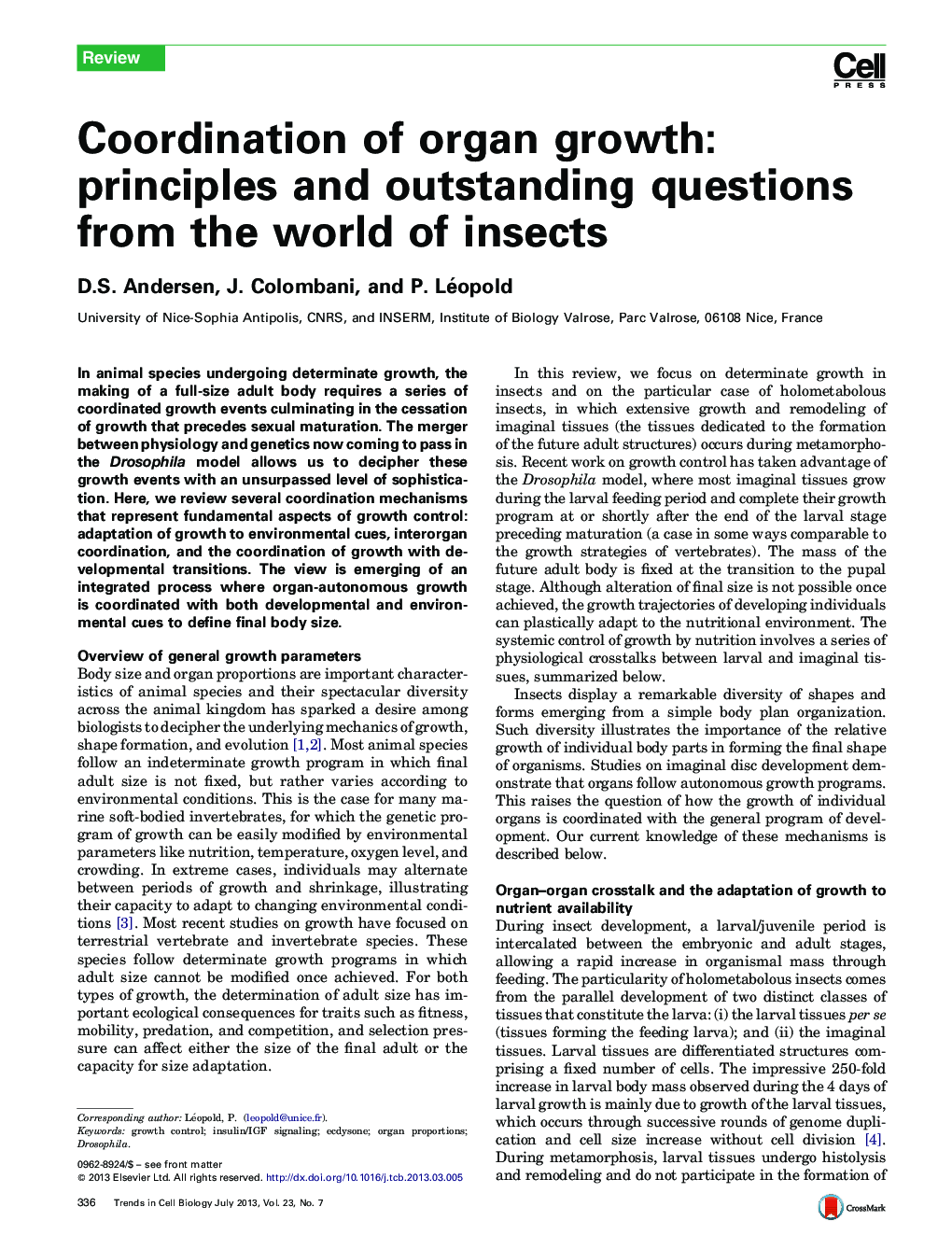| Article ID | Journal | Published Year | Pages | File Type |
|---|---|---|---|---|
| 2204602 | Trends in Cell Biology | 2013 | 9 Pages |
•The growth control field benefits from intense research on insect models.•Organ growth is coupled with environmental cues through systemic regulation.•Interplay between growing organs and the central system determines final size.
In animal species undergoing determinate growth, the making of a full-size adult body requires a series of coordinated growth events culminating in the cessation of growth that precedes sexual maturation. The merger between physiology and genetics now coming to pass in the Drosophila model allows us to decipher these growth events with an unsurpassed level of sophistication. Here, we review several coordination mechanisms that represent fundamental aspects of growth control: adaptation of growth to environmental cues, interorgan coordination, and the coordination of growth with developmental transitions. The view is emerging of an integrated process where organ-autonomous growth is coordinated with both developmental and environmental cues to define final body size.
